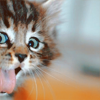Emwilson7
Members
-
Joined
-
Last visited
-
Country
United States
-
-
-
-
-
online group study for SBB exam
I had a RhIg calculation question on my exam, and I remember it specifically giving directions on whether to add a dose or not. I can't remember which way though, It's been a while now since I've taken the exam.
-
-
-
-
IgG Blocking to obtain a phenotype on +DAT patient
I've never heard of it. You could treat with EGA or cholorquine, or use monoclonal reagents for typing.
-
Moving to CO...Need help!
You could always look at any local blood centers in the area and try to get into a reference lab. Or you could just apply to a hospital and bargain with them to be assigned to the blood bank only.
-
Modification of antigen negative units
.
-
 Emwilson7 reacted to a post in a topic:
Donor Units Issued In Plastic Bags - Regulatory Requirement?
Emwilson7 reacted to a post in a topic:
Donor Units Issued In Plastic Bags - Regulatory Requirement?
- Procedure For Making Student Specimens
-
-
-
online group study for SBB exam
If anyone else would like a copy of the SBB review guide, just send me your email address.
-
online group study for SBB exam
Do you want me to scan it and email it? Or would you rather I print it out and mail it to you?
-
online group study for SBB exam
I still have it printed out, I can make a copy for you if you like.
-
Saline QC
We do almost the same as BBCLS, except we don't add enhancement. It's done every morning with daily QC.
-
McLeod phenotype
I found a McLeod donor last year when I was randomly screening donors for Kpb. In tubes, I wasn't able to pick up K, Kpa, or Kpb. Tube testing of k was only microscopically positive. With as strong of reactions as you're getting, I wouldn't think your patient has the McLeod phenotype. Edit: Also, you may want to check out a blood smear on your patient. McLeod phenotype results in acanthocytes due to membrane structural changes from the missing Kx antigen. That may help give you another clue. That was one thing I noticed when I was reading my tubes microscopically, not a single red cell looked normal under the scope.
-
SBB Exam
There were quite a few that answers could be found in the technical manual, but the test does go beyond that. Don't put all your eggs in one basket, you're going to need to study from multiple resources. Another thing that really helped me was just working in a reference laboratory. I had the chance to actually work on some of those uncommon antibodies and find rare antigen types which helped the information stick.
-
SBB Exam
To my knowledge there aren't any specific books for the exam, just the suggested reading materials on the ASCP site. I read the technical manual cover to cover twice, went through the SBB lectures given by Dr.Garraty at my work, and used the review guide given at the AABB conference.
-
SBB Exam
I figured you meant molecular methods like PCR, sequencing methods, molecular cloning, and the like. I did not have any questions that included anything of that sort. Not that it would have bothered me in the slightest if there was, I used to work in a molecular research lab before I got into the blood banking world!
-
SBB Exam
On my exam I took on March 1st, there was none. There also wasn't a single question that involved antigen frequencies or panels. There were a lot of case study questions where you had to figure out if it was TTP, DIC, HUS, etc, then choose the appropriate treatment. There also was a question like "blah blah blah statement" is a requirement from A.Osha B.FDA C.AABB, etc. I also had 2 questions that gave you the current cost of a test and the length of time to perform it, then gave you 3 other options and you had to figure out which one was most cost effective. Another question with 4 pieces of equipment, their initial cost and the cost of yearly maintenance, and you have to figure out which one is most cost effective. Lots of questions with family studies and tracing where a particular gene was passed down (for example the dominant Lutheran inhibitor). I also had a couple questions on possible phenotype outcomes of children if their parents are of a given phenotype. You then had to figure out the possible genotype and go from there. One interesting one was a woman phenotypes as K+k-, of choices A,B,C,D that are possible outcomes for her children, which one would indicate the mother is a heterozygote for the Ko allele. Of all the hard memorization calculations, the only one I had to use was for calculating CCI.
-
Second "stick" for donors?
.
